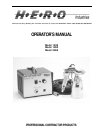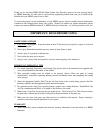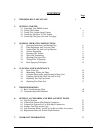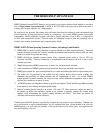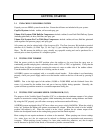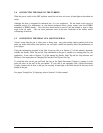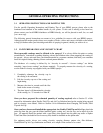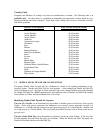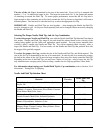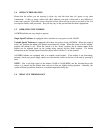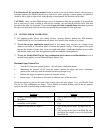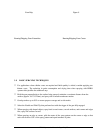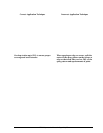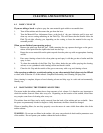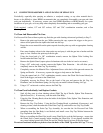
HERO Operator’s Manual – Page 7 of 23
Viscosity Chart
Properties and thickness of coatings vary from one manufacturer to another. The following chart is a
guideline only. Use these times as a guideline in determining the appropriate viscosity based on your
spraying technique and finish standards. Some high solids coatings may exceed a reasonable viscosity
and still be sprayable.
Material To Be Sprayed Time To First Break In Stream
Acrylic Finishes
Acrylic Metallic
Acrylic Primer
Adhesives
Automotive Lacquer
Chromates
Dyes
Enamel
Hammer Finishes
Hard Gloss Synthetics
Imron
Lacquer
Latex
Marine Paint
Masonry Paint
Oil-bound Heavy-bodied Primers
Polyurethane Paint
Stains
Synthetic & Lacquer Metallic
Water Sealer
10-15 seconds
10-15 seconds
20-40 seconds
40-60 seconds
20-30 seconds
20-25 seconds
10-20 seconds
25-50 seconds
30-40 seconds
30-40 seconds
30-45 seconds
10-30 seconds
30-45 seconds
30-45 seconds
30-50 seconds
35-40 seconds
20-40 seconds
10-20 seconds
20-25 seconds
10-20 seconds
3.3 NEEDLE, FLUID TIP AND AIR CAP SELECTION
The proper Needle, Fluid Tip and Air Cap combination is critical to the optimal performance of any
spraying system. Needles and Fluid Tips are sized together – when changing the Needle, the Fluid Tip
must be changed as well. Air Caps are sized separately and can be changed without necessarily changing
the Needle and Fluid Tip. HERO manufacturers seven different sizes of Needles and Fluid Tips ranging
from 0.50mm to 3.0mm, and three different sizes of Air Caps.
Identifying Needle, Fluid Tip and Air Cap sizes
The size of a Needle can be determined by the number of annular grooves in the brass sleeve on the
Needle. Every wide groove represents one millimeter, every narrow groove represents one-half of a
millimeter, i.e.: a Needle with one wide groove and one narrow groove is a 1.5mm Needle; a Needle with
two wide grooves is a 2.0mm Needle. The only Needle that differs from this is the 0.75mm, which has no
grooves at all.
The size of the Fluid Tip can be determined by placing it on the tip of the Needle. If the tip of the
Needle protrudes from the Fluid Tip, they do not match. When the Needle and Fluid Tip match, the
Needle will be flush with the end of the Fluid Tip.



